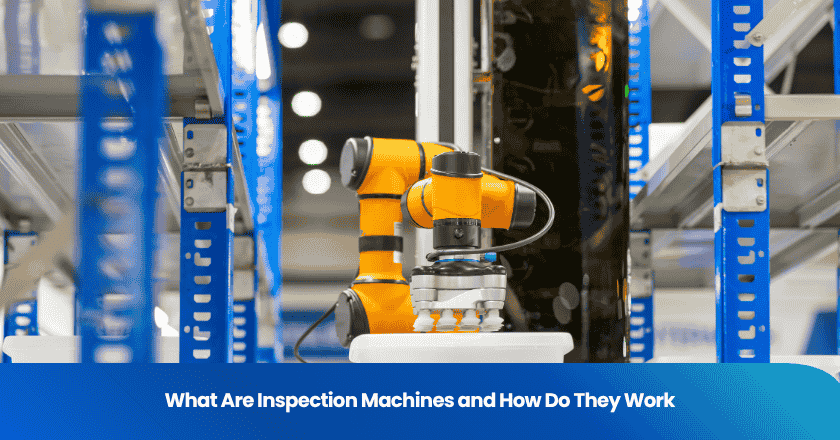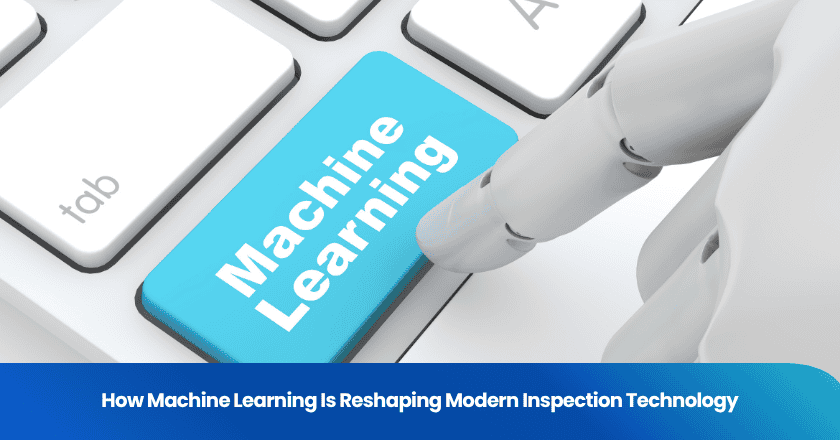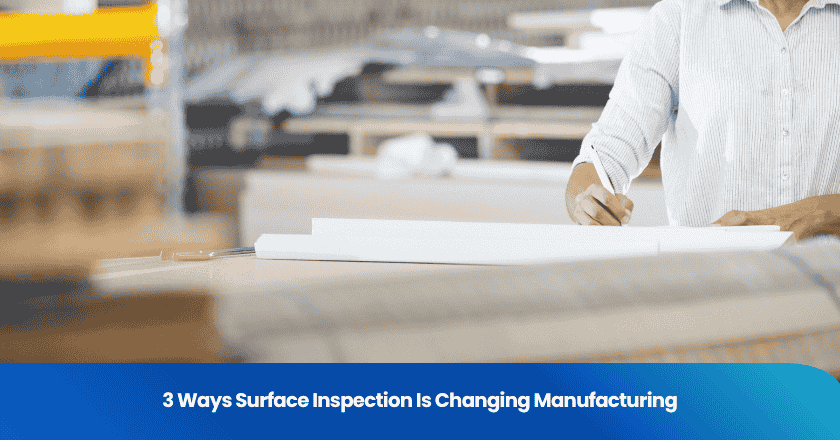
An inspection machine uses advanced inspection solutions and inspection technology to perform detailed diagnostics and assess the quality of products. You rely on machine inspection to achieve consistent results, unlike manual inspection, which can vary due to human error. Over 65% of manufacturers still use manual inspection, while approximately 52% have adopted automated systems. Industries such as electronics, automotive, and telecommunications drive demand for automated system deployment, supporting high-throughput manufacturing and robust quality control strategies. Pre-delivery inspection ensures products meet strict standards before shipment.
Key Takeaways
- Inspection machines enhance product quality by reducing human error and increasing accuracy in defect detection.
- Automated systems operate faster and more consistently than manual inspections, improving overall production efficiency.
- Regular inspections help maintain safety standards and compliance, protecting both employees and the company's reputation.
- Different types of inspection machines, like vision systems and automated optical inspection, cater to specific industry needs.
- Investing in inspection technology can lead to significant cost savings by minimizing waste and reducing labor costs.
Inspection Machine Overview
Definition
You use an inspection machine to perform systematic checks on equipment and products. Industry standards define machine inspection as a process that examines machines to ensure they function correctly, efficiently, and safely. You rely on mechanical evaluations, software diagnostics, visual assessments, and performance analyses to maintain high standards. This approach helps you detect issues early and maintain consistent quality across your operations.
To understand how inspection machines differ from manual inspection, consider the following comparison:
| Aspect | Manual Inspection | Automated Inspection |
|---|---|---|
| Speed | Slow | Fast |
| Scalability | Limited | High |
| Consistency | Variable | High |
| Labor Intensity | High | Low |
Manual inspection often leads to inconsistent results. Defect detection rates can vary between 60% and 90% because inspectors may experience fatigue. This variability can cause significant quality issues, especially in industries where precision matters. Automated inspections operate continuously and deliver high speed and consistent results. You find these systems ideal for environments like semiconductor manufacturing, where accuracy is essential.
Purpose
You use inspection machines to achieve several important objectives in industrial settings. These machines help you maintain safety, improve product quality, and optimize maintenance schedules. The primary purposes include:
- Conducting visual inspections of machine functionality and components.
- Performing safety checks, including failsafe features.
- Observing machine operation to confirm correct performance.
- Assessing wear on components to predict maintenance needs.
- Recommending maintenance steps based on inspection findings.
- Scheduling immediate maintenance tasks when necessary.
- Documenting inspection results with summaries and reports.
Regular inspections protect employee health and safety. You reduce workplace injuries and associated costs by identifying hazards early. Inspections also demonstrate due diligence, helping you avoid liability. Early detection of problems lowers maintenance costs and keeps your operations running smoothly.
Inspection machines deliver measurable benefits across industries. For example, AI-driven inspections help you meet FDA, USDA, and HACCP regulations by detecting contaminants and defects in food production. You minimize waste and reduce costs by catching inconsistencies early. Consistent product quality builds consumer trust and protects your brand reputation. In electronics and construction, these machines identify microscopic defects, ensuring structural integrity and compliance with industry standards.
Tip: You can improve reliability and safety by scheduling regular inspections and acting on maintenance recommendations.
How Inspection Machines Work
Main Components
You find that every inspection machine relies on several essential components to deliver accurate and reliable results. These components work together to support the inspection process and ensure consistent quality control. The main elements include:
1. Mechanical components
- Spindles
- Bearings
- Tool holders
2. Electrical system
- Control panel
- Motors and drives
- Wiring
3. Coolant system
- Coolant tank
- Hoses and piping
- Coolant pump
4. Software and controlling systems
- Compatibility with existing systems
- Display and interface
- Restoration ability
Each part plays a specific role. Mechanical components provide stability and movement. The electrical system powers and controls the machine. The coolant system prevents overheating during operation. Software and control systems allow you to monitor, adjust, and restore settings as needed.
Note: Proper maintenance of each component ensures the inspection machine operates at peak efficiency and reduces downtime.
Operational Process
You follow a structured inspection process when using these machines. The process begins with scheduled or proactive checks, depending on your production needs. Here is a typical step-by-step workflow:
1. Preparation
You set up the machine and select the appropriate inspection program. The system calibrates itself and checks all components for readiness.
2. Component testing
The machine examines each product or part using high-speed cameras, sensors, and sometimes artificial intelligence. Cameras capture thousands of frames per second, allowing you to detect rapid changes or defects in real time.
3. Data analysis
The system analyzes images and sensor data. Artificial intelligence classifies products by shape, color, size, and texture. It also identifies defects that may be invisible to the human eye.
4. Decision and action
The machine compares results against preset standards. If it detects a defect, it flags the item for further review or removal from the production line.
5. Reporting
The system generates detailed reports. You can review these to track trends, identify recurring issues, and improve future testing.
The following table highlights how different technologies contribute to the inspection process:
| Contribution | Description |
|---|---|
| Rapid Process Capture | High-speed cameras capture thousands of frames per second, detecting rapid process changes. |
| Defect Detection | Cameras quickly identify and locate defects, improving production yield. |
| Product Classification | AI classifies products by shape, color, size, and texture, enhancing sorting efficiency. |
| Quality Inspection | AI detects defects invisible to the human eye, ensuring only high-quality products proceed. |
| Defect Identification | Automated systems identify surface defects and assembly errors, ensuring adherence to specs. |
| Integration with AI | AI enables deep learning and rapid adaptation to new products, enhancing inspection ability. |
You see these technologies in action across many industries. For example, in pharmaceuticals, machines verify labels, seals, and packaging integrity. In automotive manufacturing, they check dimensions and surface quality, detecting cracks or misalignments. Additive manufacturing uses inspection machines for non-destructive testing and layer accuracy assessment. A leading medical device manufacturer improved valve inspection accuracy and reduced false positives by adopting AI vision technology. Automotive assembly lines have achieved defect detection rates above 95% after integrating advanced inspection systems.
Tip: Regularly reviewing inspection data helps you identify process improvements and maintain high product standards.
Types of Inspection Machines
You encounter several main categories when selecting an inspection machine for your operations. Each type serves a unique purpose and fits specific industry needs.
Vision Inspection System
A vision inspection system uses cameras and advanced software to analyze products as they move through production. You follow a clear process:
1. Product positioning in the inspection zone.
2. Image capture with high-resolution cameras.
3. Image processing using algorithms and AI.
4. Decision and action based on preset standards.
5. Data logging for audits and optimization.
You see vision inspection systems in automotive, electronics, pharmaceuticals, food and beverage, and packaging. For example, you use them to check welds in automotive manufacturing, verify fill levels in beverage bottles, and inspect blister packs in pharma. These systems help you catch defects early and maintain high quality.
| Industry | Primary applications | Key benefits |
|---|---|---|
| Automotive | Weld inspection, paint defects | Prevents recalls, ensures safety compliance |
| Electronics | PCB inspection, solder joints | Detects defects at micrometer resolution |
| Pharma | Blister pack checks | Ensures compliance, full traceability |
| Food & beverage | Fill levels, cap seals | Inspects high volumes, prevents mislabeling |
Machine Vision System
A machine vision system builds on the vision inspection system by adding real-time feedback and advanced analytics. You use it when you need high precision, speed, and consistent results. This system excels in environments where manual inspection slows production or when defects are costly.
| Feature | Machine Vision Systems | Traditional Inspection Machines |
|---|---|---|
| Precision | High, automated image analysis | Variable, human skill dependent |
| Speed | Production speed, real-time | Slower, manual |
| Data Collection | Extensive analytics | Limited |
| Consistency | No fatigue, consistent | Inconsistent, human error |
You rely on machine vision systems in automotive assembly, electronics, and logistics. These systems handle parts that move quickly or vary in orientation, ensuring you spot defects before they reach customers.
Automated Optical Inspection
Automated optical inspection (AOI) uses optical sensors and software to detect defects in real time. You find AOI essential in electronics manufacturing for checking solder joints and component placement. In automotive, you use AOI to monitor quality on production lines. Medical device manufacturers depend on AOI for strict quality metrics and real-time monitoring.
| Industry | Purpose of AOI |
|---|---|
| Electronics Manufacturing | Real-time quality checks, defect detection |
| Automotive | Monitoring and assessment of manufactured products |
| Medical Device Manufacturing | Maintaining consistency and quality in production |
Automotive Inspection Machine
An automotive inspection machine specializes in evaluating vehicles and their components. You benefit from high-speed, repeatable assessments and seamless integration with production lines. These machines use advanced technologies like AI and machine learning to detect defects in paint, welds, and assembly.
| Unique Features of Automotive Inspection Machines | Comparison with Other Inspection Systems |
|---|---|
| Specialized design for vehicle evaluation | General design for various inspections |
| High-speed and repeatable assessments | Variable speed and repeatability |
| Integration capabilities with production lines | Limited or no integration |
| Advanced technologies (AI, machine learning) | Basic technologies |
You use automotive inspection machines to ensure vehicles meet strict safety and quality standards before they leave the factory.
Machine Inspection Benefits
Accuracy
You achieve a new level of accuracy when you use a machine inspection system. Automated vision systems and a machine vision system work together to reduce inspection errors by over 90% compared to manual inspection. This improvement means you catch up to 80% more defects, which boosts your quality assurance efforts. The following table highlights the measurable gains you see with these systems:
| Evidence Type | Improvement Description |
|---|---|
| Inspection error reduction | Over 90% decrease compared to manual inspection |
| Defect rate reduction | Up to 80% fewer defects |
| Machine vs Human Inspection | Machine recall: 0.842, precision: 0.837; Machines outperform humans (recall 0.804, precision 0.79) |
AI-powered inspection machines enhance defect detection accuracy, reducing both false positives and false negatives. Regular calibration and diverse training data make these systems reliable for manufacturing quality control. You balance sensitivity and specificity, so you identify true defects while minimizing unnecessary product rejections. This level of accuracy supports compliance with safety standards and ensures your products meet strict quality requirements.
Speed
You benefit from high-speed quality checks when you implement a vision inspection system or a machine vision system. Automated vision systems inspect parts at rates humans cannot match, completing tasks over 80 times faster. This speed increases your throughput and allows you to reallocate nearly 20% of your quality control staff to higher-value tasks. Here are some ways speed impacts your operations:
- Consistent and precise inspection through vision systems for quality inspection enhances product quality and reduces defects.
- Real-time data and instant feedback from automated optical inspection accelerate process improvements.
- Automated systems reduce cycle time by 20%, which boosts productivity in automotive and other industries.
- Fewer defects and higher-quality products result from rapid, reliable testing and component testing.
Cost-Effectiveness
You lower your operational costs significantly with machine inspection. Automated visual inspection and AI-powered systems handle most testing, reducing the need for a large workforce. This shift allows your staff to focus on more valuable tasks, improving productivity. The table below outlines key cost-saving benefits:
| Cost-Saving Benefit | Description |
|---|---|
| Reduced Labor Costs | Automation reduces the need for manual inspection, leading to lower labor expenses. |
| Increased Production Throughput | Automated systems allow for faster inspection processes, enhancing overall production efficiency. |
| Lower Maintenance and Operational Costs | Predictive maintenance reduces downtime and associated costs by monitoring equipment conditions. |
| Reduced Material Waste | Early defect detection minimizes waste of raw materials, contributing to cost savings. |
| Enhanced Product Quality | Consistent quality reduces warranty claims and rework costs, improving overall profitability. |
Automated vision systems optimize power consumption and prevent defective products from entering downstream processes. You avoid regulatory fines and product recalls, which protects your reputation in automotive, food, and pharmaceutical sectors. Over time, inspection machines reduce waste, improve quality assurance, and lower the total cost of ownership for your manufacturing operations.
Applications
Manufacturing
You rely on inspection machines to maintain high accuracy and efficiency in manufacturing. These systems support machine inspection by automating defect detection and component testing. You use a vision inspection system or a machine vision system to check weld seams, verify threads, and detect surface defects. Automated testing ensures you meet quality control requirements and safety standards. The table below highlights common applications across industries:
| Industry | Common Applications |
|---|---|
| Automotive & Industrial | Weld seam inspection, Thread verification, Surface defect detection, Assembly verification, Gap and flush measurement, Part traceability |
| Electronics & PCB Assembly | Solder joint inspection, Component presence checking, Fine-pitch lead inspection, Connector alignment verification |
| Food & Beverage | Fill-level inspection, Cap and seal integrity checks, Label verification, Foreign object detection, Packaging inspection |
| Pharmaceutical & Medical | Blister pack inspection, Vial and syringe fill validation, Tamper-evident seal inspection, Label presence verification |
Automotive Inspection Machine
You use an automotive inspection machine to ensure every vehicle meets strict quality and safety standards. These machines perform visual inspection, dimensional inspection, and non-destructive testing. You benefit from automated optical inspection and machine vision system integration, which provide real-time defect detection and traceability. You also apply statistical process control and end-of-line testing to verify assembly quality. By using an automotive inspection machine, you improve accuracy, reduce defects, and maintain compliance with industry regulations.
- Visual inspection checks for scratches and misalignments.
- Dimensional inspection confirms precise measurements.
- Automated optical inspection identifies defects during production.
- Traceability systems track components for rapid issue resolution.
Food and Beverage
You depend on inspection machines to guarantee food safety and compliance. These systems use a vision inspection system to check fill levels, cap seals, and packaging integrity. Automated machine inspection detects foreign objects and verifies labels, reducing human error and increasing efficiency. Real-time data from machine vision systems supports rapid decision-making and helps you meet safety standards.
Tip: Regular use of inspection machines in food and beverage production helps you avoid recalls and maintain consumer trust.
Pharmaceuticals
You trust inspection machines to uphold regulatory standards in pharmaceutical manufacturing. Automated systems perform visual inspection, fill level checks, and seal integrity verification. Machine inspection ensures correct dosage, accurate labeling, and contaminant-free products. You use component testing and machine vision systems to maintain accuracy and quality throughout production. These measures support compliance and protect patient safety by reducing defects and ensuring only high-quality products reach the market.
Implementation Considerations
Integration
When you introduce inspection machines into your production line, you face several challenges. The most common issues include:
1. High initial investment for equipment, software, and installation.
2. Complex integration with existing systems, which requires careful planning.
3. Ongoing maintenance and calibration to maintain accuracy, sometimes leading to downtime.
4. Limited flexibility if your production needs change.
You can overcome these challenges by working closely with your engineering and IT teams. Map out your current workflow and identify where machine inspection will add the most value. In the automotive industry, integration often involves connecting inspection machines to robotic arms or conveyor systems. You should test the system thoroughly before full deployment to ensure smooth operation.
Tip: Start with a pilot project in one area of your line. This approach helps you identify integration issues early and refine your process.
Product Variability
Product variability can impact the effectiveness of machine inspection. If your products change frequently in size, shape, or material, you need a flexible system. In automotive manufacturing, for example, you may produce different models on the same line. Choose inspection machines that allow for quick reprogramming and easy adjustment. Train your staff to update inspection parameters as needed. Regularly review inspection data to ensure the system maintains high accuracy across all product types.
Maintenance
Proper maintenance keeps your inspection machines running reliably. Follow these best practices:
- Document each maintenance step, including safety precautions.
- Use checklists to avoid missing critical tasks.
- Train your maintenance staff and schedule regular refresher courses.
- Perform routine inspections using detailed checklists.
- Record all inspection results and analyze trends over time.
Preventive maintenance, such as scheduled cleaning and repairs, helps you avoid costly breakdowns. Always follow the manufacturer's guidelines for maintenance. This approach ensures your equipment lasts longer and performs well. In the automotive sector, regular calibration is essential for maintaining accuracy in machine inspection.
Note: Invest in ongoing training for your team. On-the-job training, workshops, and online courses help staff stay up to date with the latest procedures and technologies.
You use an inspection machine to ensure quality, safety, and compliance across industries. In the automotive sector, an automotive inspection machine checks every detail, from assembly to final inspection. You see these machines improve efficiency and accuracy in automotive production. Consider the following key takeaways:
| Key Takeaway | Description |
|---|---|
| Importance of Inspections | Inspections support quality control, safety, and compliance, building trust and reputation. |
| Types of Inspections | Pre-production, in-process, and final inspections address every stage of manufacturing. |
| Future Trends | Automation and AI-driven technologies lead to greater efficiency and accuracy. |
| Regulatory Compliance | Mastering inspections ensures high standards and regulatory compliance. |
| Defect Identification | Each stage helps identify defects, preventing quality issues in automotive manufacturing. |
To get started, evaluate your production needs and consult with experts to select the right automotive inspection machine for your facility.
FAQ
What is the main advantage of using inspection machines?
You gain consistent and accurate results with inspection machines. These systems reduce human error, increase speed, and help you maintain high product quality across your operations.
How often should you schedule machine inspections?
You should schedule inspections based on your production volume and industry standards. Many facilities perform daily or weekly checks to ensure optimal performance and safety.
Can inspection machines detect all types of defects?
Inspection machines identify most visible and measurable defects. You may need to adjust settings or use specialized sensors for unique or complex issues.
Do you need special training to operate inspection machines?
You benefit from basic training to operate and maintain inspection machines. Most systems feature user-friendly interfaces, but ongoing education helps you maximize performance and reliability.
Are inspection machines suitable for small businesses?
You can implement inspection machines in small businesses. Scalable solutions exist for different production sizes, allowing you to improve quality control without large investments.
Grow your business with TradeAider Service
Click the button below to directly enter the TradeAider Service System. The simple steps from booking and payment to receiving reports are easy to operate.



